Articles
- Page Path
- HOME > Restor Dent Endod > Volume 28(6); 2003 > Article
- Original Article Rewetting effect of water-based primer on the air-dried dentin
- Ki-Young Kim, Jeong-Kil Park, Bock Hur
-
2003;28(6):-503.
DOI: https://doi.org/10.5395/JKACD.2003.28.6.498
Published online: November 30, 2003
Department of Conservative dentistry, College of Dentistry, Pusan National University, Korea.
- Corresponding author (kykim76@freechal.com)
Copyright © 2003 Korean Academy of Conservative Dentistry
- 742 Views
- 2 Download
Abstract
-
The purpose of this study was to evaluate the rewetting effect of water-based primer on the air-dried dentin. In this in vitro study, freshly extracted non-caries human molars and three-step adhesive system(SBMP) were used.Freshly extracted non-caries human molars and three-step adhesive system(SBMP) were used. Flat occlusal dentin surface were prepared using low-speed diamond saw. Prepared teeth were randomly divided into three groups. Group 1.(W); etched(35% phosphoric acid for 15s) and blot-dried, Group 2.(5D); 5s air-dried, Group 3.(30D); 30s air-dried. To obtain color contrast in CLSM observation, primer was mixed with rhodamine B and bonding resin was mixed with fluorescein. Microscopic sample of each group were obtained after longitudinal section. Morphological investigation of resin-dentin interface and thickness of hybrid layer measurement using CLSM were done. Microtensile bond strength for each specimen was measured. Specimen were observed under microscope to examine the failure patterns of interface between resin and dentin.The results of this study were as follows:
The results(mean) of Thickness of hybrid layer were W;19.67, 5D;20.9, 30D;10µm. Only 30D had statistically significant differences to W and 5D(P<0.05).
The results(mean) of Microtensile bond strength were W;16.02, 5D;14.69, 30D;11.14MPa. Only 30D had statistically significant differences to W and 5D(P<0.05).
There were positive correlation between Thickness of hybrid layer and microtensile bond strength(P<0.05).
- 1. Van Meerbeek B, Inokoshi S, Braem M, Lambrechts P, Vanherle G. Morphological aspects of the resin-dentin interdiffusion zone with different adhesive systems. J Dent Res. 1992;71: 1530-1540.ArticlePubMedPDF
- 2. Sano H, Shono T, Takatsu T, Hosoda H. Microporous dentin zone beneath resin-impregnated layer. Oper Dent. 1994;19: 59-64.PubMed
- 3. Pashley DH, Ciucchi B, Sano H, Horner JA. Permeability of dentin to adhesive resins. Quintessence Int. 1993;24: 618-631.PubMed
- 4. Nakabayashi N, Kojima K, Masuharg E. The promotion of adhesion by the infiltration of monomers into tooth substrate. J Biomed Mater Res. 1982;16: 265-273.ArticlePubMed
- 5. Kanca J. Wet bonding: Effect of drying time and distance. Am J Dent. 1996;9: 273-276.PubMed
- 6. Nakabayashi N, Pashley DH. Hybridization of dental hard tissues. 1998;Tokyo: Quintessence Publishing Co Ltd.
- 7. Inokoshi S, Harada N, Nakaoki Y, Nikaido T, Urabe I, Sano H, Yamada T, Tagami J. In: Dondi dall'Orologio G, Prati C, editors. Quality of bonding agents: adhesion mechanism. Factors influencing the quality of composite restorations: Theory and practice. 1996;. Carimate (Como), Italy: Ariesdue S.r.l; Printers 17-34.
- 8. Gwinnett AJ, Kanca J. Micromorphology of the bonded dentin interface and its relationship to bond strength. Am J Dent. 1992;5: 73-77.PubMed
- 9. Kanca J. Resin bonding to wet substrate. I. Bonding to dentin. Quintessence Int. 1992;23: 39-41.PubMed
- 10. Kanca J 3rd. Effect of resin primer solvents and surface wetness on resin composite bond strength to dentin. Am J Dent. 1992;5: 213-215.PubMed
- 11. Tay FR, Gwinnett AJ, Wei SHY. Micro-morphological spectrum from overdrying to overwetting acid-conditioned dentin in water-free, acetone-based, single bottle primer/adhesives. Dent Mater. 1996;12: 236-244.ArticlePubMed
- 12. Tay FR, Gwinnett AJ, Wei SHY. The overwet phenomenon: An optical, micro-morphological study of surface moisture in the acid-conditioned, resin-dentin inter-face. Am J Dent. 1996;9: 43-48.PubMed
- 13. Hitmi L, Bouter D, Degrange M. Influence of drying and HEMA treatment on dentin wettability. Dent mater. 2002;18: 503-511.ArticlePubMed
- 14. Gwinnett AJ. Dentin bond strength after air-drying and rewetting. Am J Dent. 1994;7: 144-148.PubMed
- 15. Finger WJ, Uno S. Bond strength of Gluma CPS using the moist dentin bonding technique. Am J Dent. 1996;9: 27-30.PubMed
- 16. Van Meerbeek B, Yoshida Y, Lambrechts P, Vanherle G, Duke ES, Eick JD, Robinson SJ. A TEM study of two water-based adhesive systems bonded to dry and wet dentin. J Dent Res. 1998;77(1):50-59.ArticlePubMedPDF
- 17. Gunadi G, Nakabayashi N. Preparation of an effective light-cured bonding agent for orthodontic application. Dent Mater. 1997;13: 7-12.ArticlePubMed
- 18. Tay F, Gwinnett AJ, Wei SHY. Ultrastructure of the resin-dentin interface following reversible and irreversible rewetting. Am J Dent. 1997;10: 77-82.PubMed
- 19. Perdigao J, Van Meerbeek B, Lopes MM, Ambrose WW. The effect of a re-wetting agent on dentin bonding. Dent Mater. 1999;15: 282-295.ArticlePubMed
- 20. Perdigao J, Swift EJ Jr, Heymann HO, Malek MA. Effect of a re-wetting agent on the performance of acetone-based dentin adhesives. Am J Dent. 1998;11: 207-213.PubMed
- 21. Perdigao J, Frankenberger R. Effect of solvent and rewetting time on dentin adhesion. Quintessence Int. 2001;32: 385-390.PubMed
- 22. Finger WJ, Inoue M, Asmussen E. Effect of wettability of adhesive resins on bonding to dentin. Am J Dent. 1994;7: 35-38.PubMed
- 23. Gwinnett AJ. Altered tissue contribution to interfacial bond strength with acid conditioned dentin. Am J Dent. 1994;7: 243-246.PubMed
- 24. Nakabayashi N, Nakamura M, Yasuda N. Hybrid layer as a dentin-bonding mechanism. J Esthet Dent. 1991;3: 133-138.ArticlePubMed
- 25. Finger WJ, Fritz U. Laboratory evaluation of one-component enamel/dentin bonding agents. Am J Dent. 1996;9: 206-210.PubMed
- 26. Prati C, Chersoni S, Mongiorgi R, Pashley DH. Resin-infiltrated dentin layer formation of new bonding systems. Oper Dent. 1998;23: 185-194.PubMed
- 27. Gwinnett AJ, Tay FR, Pang KM, Wei SH. Quantitative contribution of the collagen network in dentin hybridization. Am J Dent. 1996;9: 140-144.PubMed
- 28. Yoshiyama M, Sano H, Ebisu S, Tagami J, Ciucchi B, Carvalho RM, Johnson MH, Pashley DH. Regional strengths of bonding agents to cervical sclerotic root dentin. J Dent Res. 1996;75: 1404-1413.ArticlePubMedPDF
- 29. Nakabayashi N, Saimi Y. Bonding to intact dentin. J Dent Res. 1996;75: 1706-1715.ArticlePubMedPDF
- 30. Uno S, Finger WJ. Function of the hybrid zone as a stress-absorbing layer in resin-dentin bonding. Quintessence Int. 1995;26: 733-738.PubMed
- 31. Pashley DH, Carvalho RM. Dentine permeability and dentine adhesion. J Dent. 1997;25: 355-372.ArticlePubMed
- 32. Burrow MF, Takakura H, Nakajima M, Inai N, Tagami J, Takatsu T. The influence of age and depth of dentin on bonding. Dent Mater. 1994;10: 241-246.ArticlePubMed
- 33. Tay FR, Gwinnett AJ, Pang KM, Wei SH. Resin permeation into acid-conditioned, moist, and dry dentin: a paradigm using water-free adhesive primers. J Dent Res. 1996;75: 1034-1044.ArticlePubMedPDF
REFERENCES
Tables & Figures
REFERENCES
Citations

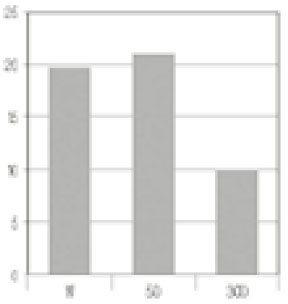
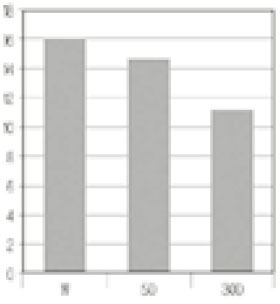
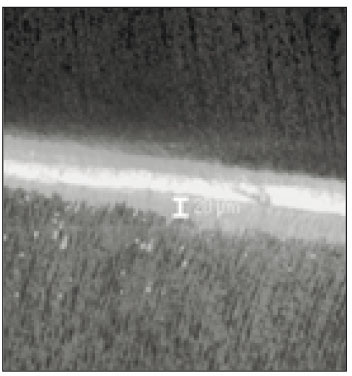
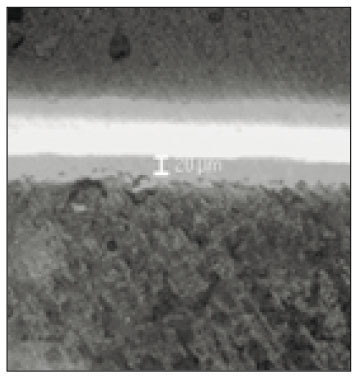
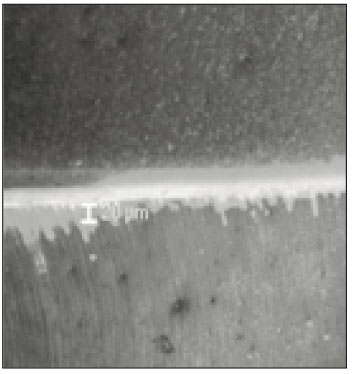
Fig. 1
Fig. 2
Fig. 3
Fig. 4
Fig. 5
SBMP;Scotchbond Multi-Purpose (3M)
Group classification according to drying method
Thickness of hybrid layer(THL)(µm) and Microtensile bond strength(MTBS)(MPa) (Mean±SD)
The distributions of fractures that occurred in the bonded specimens

 KACD
KACD





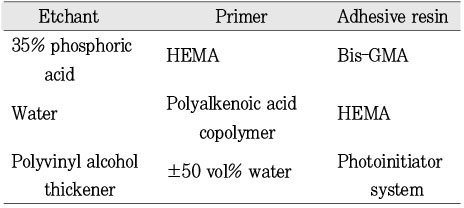



 ePub Link
ePub Link Cite
Cite

